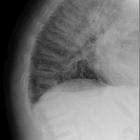parathyroid hormone
Parathyroid hormone (PTH), also known as parathormone, is secreted by the parathyroid glands in response to hypocalcemia. Its main physiologic effects are to
- increase osteoclastic activity in bone
- increase renal reabsorption of calcium
- inhibit renal absorption of phosphate and bicarbonate
- stimulate renal synthesis of 1,25-dihydroxycholecalciferol from vitamin D
All of the above effects result in a net increase of serum ionized calcium, most of which is bound to albumin.
Parathyroid hormone is counteracted by calcitonin, a 32-amino acid peptide hormone produced by the parafollicular cells of the thyroid gland, which decreases serum calcium concentration.
Chemistry
Parathyroid hormone (PTH) is synthesized and secreted by the parathyroid chief cells. It is first synthesized as a preprohormone, consisting of a 110-amino acid polypeptide chain. It is then cleaved to a 90-amino acid prohormone, then cleaved again to the active 84-amino acid hormone. Smaller fragments with as little as 34 amino acids connected to the N-terminus are responsible for much of the hormonal activity, as PTH has a half-life of <5 minutes .
Physiology
Calcium and phosphate absorption from bone
Osteolysis is a rapid phase of calcium and phosphate removal from bones that increases progressively for several hours. The osteocytes within the bone, as well as the osteocytes and osteoblasts on the bone surface, are interconnected by long filmy processes called the osteocytic membrane system. Parathyroid hormone binds to receptor proteins on the cell membranes of osteocytes and osteoblasts, thereby stimulating calcium pumps in the osteocytic membrane. Calcium diffuses from the bone fluid into the cell membrane, then out of the cells through pumps on the other side of the cells into the extracellular fluid. This is the mechanism by which calcium phosphate salts are removed from amorphous bone crystals .
Osteoclast formation and activation is, by contradistinction, a much slower phase that continues for weeks to months. Osteoclast progenitor cells are devoid of receptor proteins for parathyroid hormone; however, they express the RANK (receptor activator of nuclear factor-κ B) cell surface receptor. PTH-activated osteoblasts express the surface protein RANKL (RANK ligand). RANKL ligation to RANK activates a series of downstream signaling pathways that culminate in osteoclast maturation and activation .
Calcium excretion and phosphate excretion
PTH increases the renal tubular reabsorption of calcium. At the same time, it decreases renal phosphate reabsorption. Without its effect on the kidneys, continual loss of calcium into the urine would eventually cause calcium depletion in both the extracellular fluid and the bones .
Stimulation of 1,25-cholecalciferol synthesis
Cholecalciferol (vitamin D3) is synthesized in the skin. It is converted to 25-hydroxycholecalciferol in the liver. In the kidneys, parathyroid hormone stimulates its conversion to 1,25-dihydroxycholecalciferol, which, in turn, promotes intestinal absorption of calcium and phosphate .
Related pathology
- hyperparathyroidism
- hypoparathyroidism
- hypercalcemia in paraneoplastic endocrine syndromes
Siehe auch:
und weiter:

 Assoziationen und Differentialdiagnosen zu Parathormon:
Assoziationen und Differentialdiagnosen zu Parathormon:
